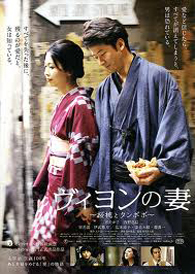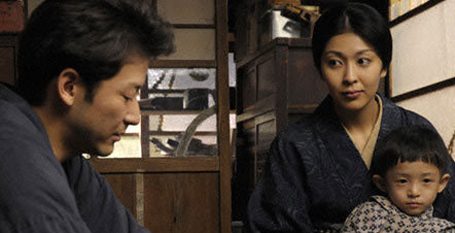
Otani (a stand-in for both authors) is a brilliant author who lies, cheats and steals when he is not plotting his next suicide attempt or visiting the next hostess club. When the film opens, an innkeeper nearly breaks down his door for racking up unpaid bills over the years while living it up as a bachelor about town in post-war occupied Japan. Why does he engage in such self-destruction despite being talented and happily married? We turn to his apologetic wife – beautiful, devoted, unaware of his activities outside his home and job. How does she cope with it? Whatever possessed her to marry him? How did they meet in the first place? What will happen to them?
To say that Villon’s Wife is a character piece would be an understatement. There is something of a novelistic approach to the screenplay, where every major (and even minor) character is presented as an intriguing enigma, a problem to be solved. And while classic theory dictates that plot is character in motion, this film almost suggests cheekily that plot is a series of mysteries about a character, set into motion. Each character comes to be defined by a dramatic yet mystifying act that he or she will perform in the course of the film. Our understanding of that act, of that character in that mysterious tableau, is key to solving the puzzles that the screenplay presents.
Villon’s Wife takes a contemplative, even intellectual approach to telling a story, and it could not have succeeded without the direction of Kichitaro Negishi and the very empathetic performances by Takako Matsu and Tadanobu Asano.
Take the time on a slow afternoon or evening and consume this film as though it were an aged fine wine.

